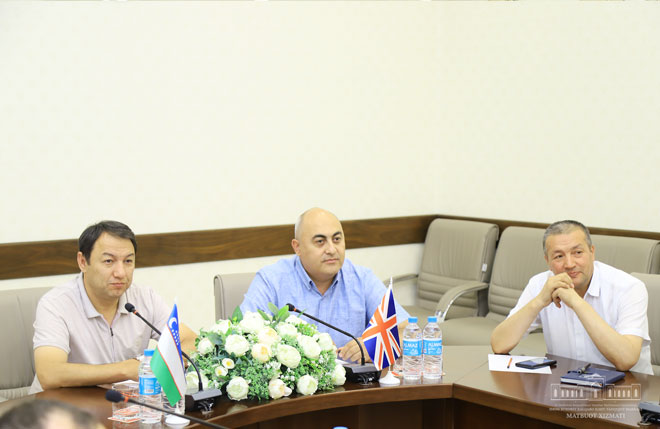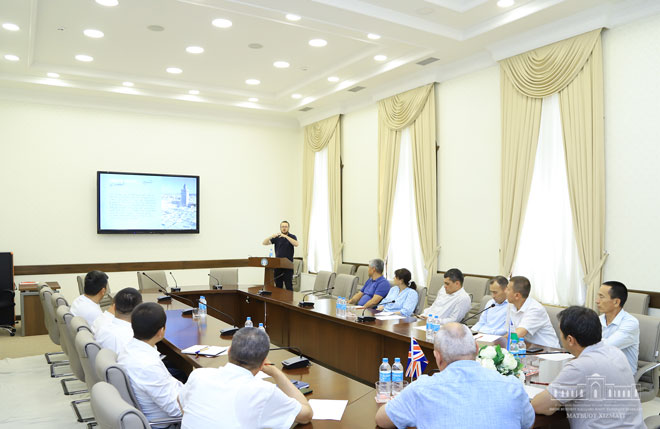Majdi Faleh, the laureate of the international scholarship program named Imam Bukhari, who is currently practicing at the Center, presented his scientific research.
The presentation organized on the theme “Islamic architecture and the influence of jurisprudence on the city and environment” was devoted to the processes of formation of Islamic urban planning traditions in the manner of fiqh science in the case of Medina, the old part of the capital of Tunisia.

The researcher first focused on the history of Medina of Tunisia, the stages of development during different dynasties. At the moment, Medina, the capital city of Tunisia, occupies 6% (270 hectares) of the city area, which is home to about 700 attractions. The settlement, which is now home to one tenth of the capital’s population (about 100,000 people), became a unique historical and economic center during the reign of Hasan ibn Noman in 700 AD, and later became the capital and intellectual center of North Africa during the Fatimid, Almohad, and Havsid periods. The old city, which underwent many changes during the conquests from the Phoenicians to the French colonists, has been preserved almost in its original state since the end of the 18th century. The densely built Medina has many alleys, alleys and dead ends. There are 26 markets and about 700 historical sites around the Great Olive Mosque in the center. The bazaar consists of a covered street lined with woolen cloth, clothing, perfumery, fruit and book shops on both sides. Artisans are located at the edge of the markets.

Majdi Faleh paid special attention to the design of houses in Medina of Tunis. The courtyards were built in a symmetrical design, according to Islamic archons. In the courtyards, where the integrity of the interior space is a priority, family members have the opportunity to connect with the sky, the sun, and nature in general. The location of doors and windows, the compatibility of building heights and, in general, houses built according to Islamic neighborliness, social order, and Sharia law define social behavior and exemplify Islamic urbanization. This includes not blocking the neighbor’s yard from sunlight and fresh air, respect for other people’s property, according to the hadith, the 3.5-meter width of streets necessary for two camels to pass side by side, the drainage system, the place of dirty chemicals and waste, and the priority of the neighbor who settled earlier in dispute resolution. important aspects and values are taken into account.

The old Medina of Tunisia, which was included in the UNESCO World Cultural Heritage List in 1979, is today not only a witness of the glorious past, but also one of the historical centers in constant development. Researcher spoke about the works of scholars on the landscape, boundaries and architecture of the old city, and shared many sources and information from legal texts on Islamic architecture in general. At the end of the presentation, the foreign researcher stated the goal of continuing his research during his scientific practice at the Center by studying the architectural solutions of monuments in the historical cities of our country.
The event continued with a lively question and answer session.
Press service
 Imom Buxoriy xalqaro ilmiy-tadqiqot markazi bukhari.uz
Imom Buxoriy xalqaro ilmiy-tadqiqot markazi bukhari.uz





